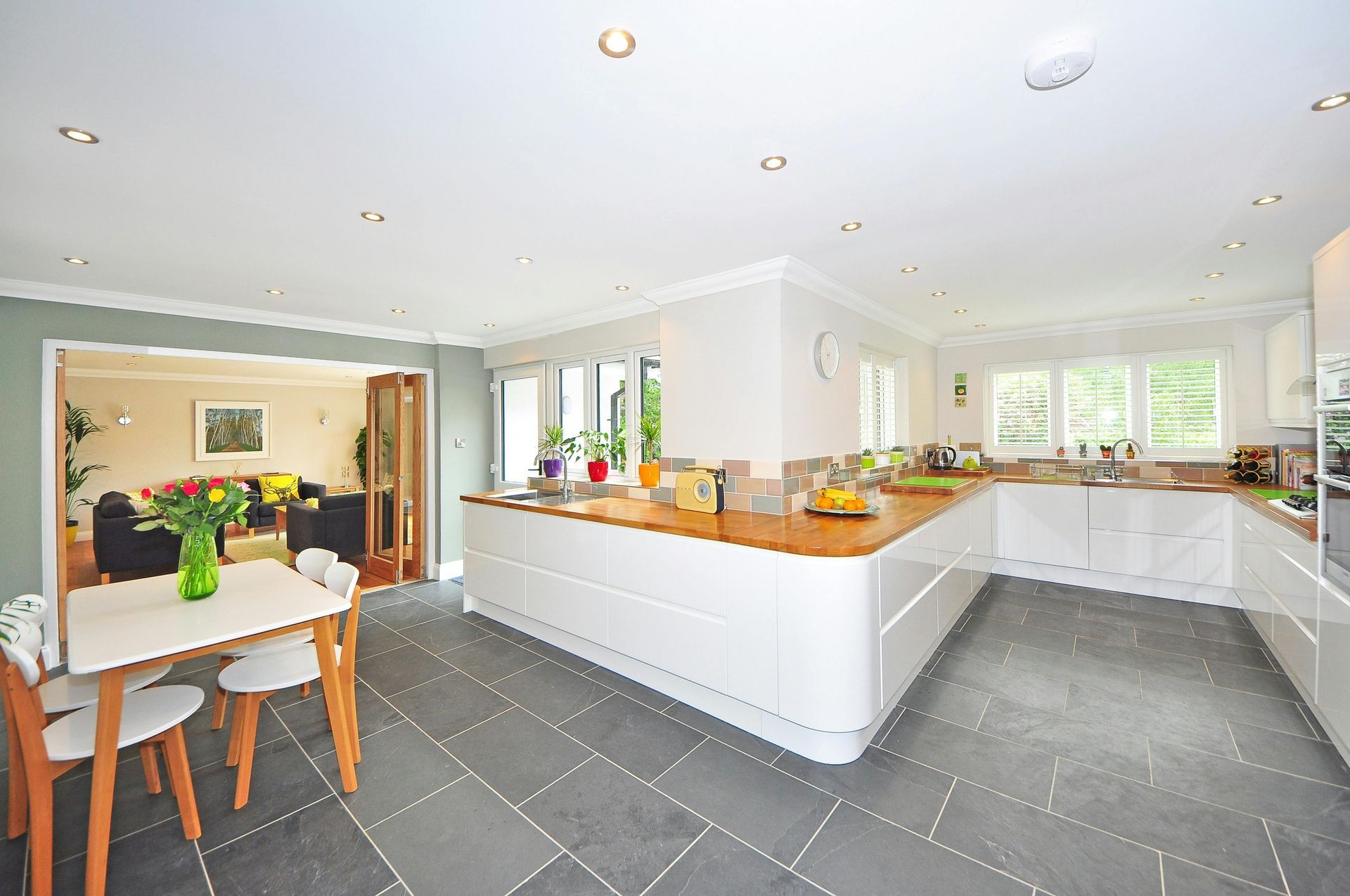Which Tile Size Is Best for Flooring? A Guide for Cincinnati Homeowners
Choosing tile for your home is an exciting step—but it comes with plenty of decisions, especially when it comes to size. From 12x12 square tiles to modern large-format options, tile size affects everything from the room’s appearance to ease of installation. So, which tile size is best for flooring?
The answer depends on your space, your design goals, and how the flooring will be used. At Cincy Preferred Flooring, we help homeowners across the Cincinnati area find the right tile for every room—and tile size plays a key role in creating a floor that’s both stylish and functional.
In this guide, we’ll explain how to choose the right tile size for your home, compare standard dimensions, and give you room-by-room recommendations.
Why Tile Size Matters
Tile isn’t just about color and material—size impacts how your floor looks and performs. The dimensions you choose can:
- Change how big or small a space feels
- Affect the number of grout lines (and how easy it is to clean)
- Influence how smoothly the flooring flows from one room to another
- Impact installation time and waste
Whether you're tiling a bathroom, kitchen, or living area, selecting the right tile size helps you strike the perfect balance between style, function, and long-term durability.
Common Tile Sizes and Their Uses
Let’s take a look at the most popular tile sizes for flooring and when they work best.
12x12 Tile
This is the classic tile size, and it has been used for decades in residential floors. It’s square and balanced, and it fits well in small to medium spaces.
Best for:
- Small bathrooms
- Laundry rooms
- Entryways
Pros:
- Familiar and widely available
- Easy to install
- Works well with diagonal layouts
Cons:
- It can look busy in large rooms due to more grout lines
- Feels traditional or dated in modern designs
12x24 Tile
This rectangular tile has quickly become one of the most popular sizes for flooring thanks to its clean, contemporary look.
Best for:
- Kitchens
- Bathrooms
- Living rooms
- Open floor plans
Pros:
- Sleek, modern aesthetic
- Fewer grout lines than smaller tiles
- It can be laid in various patterns (brick, herringbone, stacked)
Cons:
- Requires a level subfloor
- May need a professional installer for the best results
Large Format Tiles (24x24, 18x36, and larger)
Large tiles make a bold statement and create a seamless look, especially in bigger spaces. They’re often used in open-concept areas and high-end homes.
Best for:
- Living rooms
- Dining areas
- Master bathrooms
- Commercial spaces
Pros:
- Expands the look of the room
- Minimal grout lines
- Ideal for creating a luxurious feel
Cons:
- Heavier and harder to install
- Not ideal for uneven floors
- More waste if cutting is required
Small Tiles (1x1 to 4x4 mosaics)
Smaller tiles are commonly used for accent areas or floors where grip and slope are important, like showers or entryways.
Best for:
- Shower floors
- Bathroom floors
- Accent areas
- Backsplashes
Pros:
- High traction
- Great for curved or sloped surfaces
- Adds visual interest
Cons:
- Lots of grout lines
- More time-consuming to install
- May feel busy in large spaces
How to Choose the Best Tile Size for Your Space
Now that you’re familiar with the most common options let’s talk about how to narrow down your choice.
1. Consider the Room Size
- In small rooms, larger tiles (like 12x24 or 18x18) can actually make the space feel bigger by reducing grout lines and creating a more seamless appearance.
- In large rooms, oversized tiles (24x24 or larger) create a sleek, open feel. Smaller tiles may look busy unless used intentionally for a patterned effect.
Pro Tip: Use larger tiles for floors and smaller ones for walls or accents to create depth and variety.
2. Think About Layout and Pattern
Different tile sizes work better with certain layouts. For example:
- 12x24 tiles work beautifully in a brick or herringbone pattern, ideal for adding movement and style.
- Square tiles (like 12x12 or 24x24) are more traditional and best suited to a grid or diagonal layout.
- Mosaics are ideal for borders, inlays, or textured visual interest.
Larger tiles often require more precise planning, especially if you want a consistent pattern across multiple rooms.
3. Assess Grout Preferences
Don’t underestimate the impact of grout. Smaller tiles mean more grout lines, which can add texture—but also require more cleaning.
- Prefer easy maintenance? Go with larger tiles and a narrow grout joint.
- Want more grip or visual detail? Smaller tiles and wider grout lines can help.
At Cincy Preferred Flooring, we help homeowners choose grout colors and spacing that complement their design and simplify ongoing care.
4. Match the Style of Your Home
- Modern and contemporary homes typically look best with large-format tiles or long rectangles like 12x24 and 6x36.
- Traditional homes often suit square tiles in the 12x12 to 18x18 range.
- Rustic or farmhouse styles pair well with irregular or multi-size patterns that mimic natural stone or handmade tile.
Your tile should feel like a natural extension of the rest of your home’s design.
5. Account for Subfloor Conditions
Larger tiles require a flat, level subfloor to prevent lippage (uneven edges). If your home has older or uneven subfloors, smaller tiles may offer more flexibility and reduce installation challenges. At Cincy Preferred Flooring, we inspect every subfloor and can prep or level the surface as needed—so you get the right look, no matter what tile size you choose. Explore our tile flooring installation and options.

Our Recommendations by Room Type
Here’s a quick reference based on our experience installing tile across homes in the Cincinnati area:
- Small Bathrooms: 12x24 for a modern look, or 2x2 mosaics in the shower floor
- Large Bathrooms: 18x36 or 24x24 for minimal grout and open feel
- Kitchens: 12x24 laid in a staggered pattern for flow and style
- Laundry Rooms: 12x12 or 18x18 for durability and easy cleaning
- Living Rooms: 24x24 or larger for elegance and space maximization
- Entryways: 12x12 or mosaic options with high-traction surfaces
Why Cincinnati Homeowners Trust Cincy Preferred Flooring
Choosing the right tile size can be overwhelming—but it doesn’t have to be. At Cincy Preferred Flooring, we help homeowners and businesses throughout Cincinnati choose the best flooring materials, patterns, and sizes for their space, style, and budget. Here’s what sets us apart:
- In-person consultations and accurate measurements
- Expert advice on material, sizing, layout, and grout
- Professional, detail-oriented tile installation
- Clean, efficient work and clear communication
- Local knowledge of Cincinnati homes and trends
We don’t just install floors—we help you make design decisions you’ll love for years to come.
Frequently Asked Questions
Which tile size is easiest to install?
12x12 and 12x24 tiles are relatively easy to install and balance appearance with efficiency. Larger tiles require more precision and leveling.
Can I mix tile sizes in one space?
Yes—mixing sizes can create borders, patterns, or transitions between rooms. A design consultation helps ensure it looks intentional and polished.
Do larger tiles make a room look bigger?
Generally, yes. Larger tiles reduce grout lines and create a more open, streamlined appearance.
What if my floors aren’t level?
We offer subfloor leveling and prep services to ensure that your tile—regardless of size—is installed properly and looks great.
Need Help Choosing the Right Tile Size? We’re Here for You.
Still unsure which tile size is best for your flooring? The team at Cincy Preferred Flooring is ready to help. From selecting the perfect tile to expert installation, we make the process simple, stress-free, and customized to your needs.
Contact us today to schedule your free consultation, and let’s bring your vision to life—one tile at a time.


